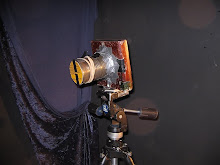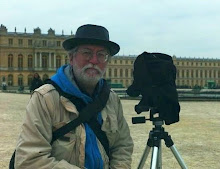The capacity for delight is the gift of paying attention.
Julia Margaret Cameron
They face off at each other. The beloved but derelict amusement ride and the national treasure that was despised at its inauguration.
Parachute Jump, Coney Island
Eiffel Tower, from the Champs de Mars
Winifred, by some accounts the patron saint of virgins and chastity, stands overlooking a former whaling town once know for prostitution; Ingres the Neoclassicist now lumped together with his adversaries the Romantics.
St Winifred, Hudson NY
Ingre's grave, Pere Lachaise Cemetery, Paris
I will go back to Paris in a couple of weeks.What should I photograph? Kurt Vonnegut wrote "Peculiar travel suggestions are dancing lessons from God"...so? Would you like to dance?





















































